- Home
- Nathaniel Philbrick
In the Heart of the Sea Page 8
In the Heart of the Sea Read online
Page 8
It was more than just the money. Each whale, each cask of oil, brought the Nantucketer closer to returning home to his loved ones. And it was when they were trying out the whale that the whalemen typically grew the most nostalgic for home. “Wives and children are remembered with new affection at such moments,” claimed William H. Macy, “and each feels nearer home and friends at each recurring sound of the light-driven bung, and the inspiring cry, 'Away cask!' Truly is it remarked by old whalemen that the most delightful parts of the voyage are 'Boiling' and arriving home.”
It was during this busy and exhausting two-month stretch off Peru that the crew of the Essex received what was for a whaleman the ultimate motivator: letters from home.
Toward the end of May, the Essex spoke, or hailed, the Aurora, the brand-new ship fitted out by Gideon Folger and Sons for Daniel Russell, formerly the captain of the Essex. The Aurora had left Nantucket on the day after Christmas, bringing with her news that was only five months old-a blink of an eye in the time frame of a whaleman. When the Aurora left Nantucket, the price of whale oil was at an all-time high; people were still talking about the fire in Rhoda Harris's schoolroom in the black section of town, known as New Guinea; and they were catching codfish (two hundred to a boat) off the Nantucket village of Siasconset.
But of most interest to the men was the pouch of mail, along with several newspapers, that Daniel Russell handed over to Captain Pollard. After the officers had selected their letters, the bag was sent forward to the crew. “It was amusing to watch those of our lads who had been disappointed and found no letters for them,” Nickerson recalled. “They would follow us around the decks and whilst we were reading our letters would seat themselves beside us, as though our letters could be of service to them.” Despairing of finding out anything about their own families, the unlucky ones sought solace in what Nickerson called “the careless folds of a newspaper.” For his part, Nickerson would reread the newspapers so many times that he would soon have their contents memorized.
The meeting between the Aurora and the Essex provided Pollard with the chance to speak with his former commander, the thirty-four-year-old Daniel Russell. The Aurora was a much larger, state-of-the-art ship and would return to Nantucket two years later, full of oil. Later it would be said that when Captain Russell had left the Essex to assume command of the Aurora, he had taken his old ship's luck with him.
one of the topics Pollard and Russell discussed was the recent discovery of a new whaling ground. As if to refute Captain Swain's dour prediction that the Pacific Ocean had been fished out of sperm whales, Captain George Washington Gardner of the Globe had headed farther out to sea in 1818 than any other Nantucket whaleship had so far dared to go. More than a thousand miles off the coast of Peru he hit the mother lode, an expanse of ocean full of sperm whales. He returned home to Nantucket in May of 1820 with more than two thousand barrels of oil.
Gardner's discovery became known as the Offshore Ground. During the spring and summer of 1820, it was the talk of the whale fishery. Understanding that whales appeared in the Offshore Ground in November, Pollard resolved to make one final provisioning stop in South America, where he'd secure plenty of fruits, vegetables, and water; then, after touching at the Galapagos Islands, where he would pick up a load of giant tortoises (which were prized for their meat), he would head out for this distant section of ocean.
Sometime in September the-Essex called at Atacames, a little village of approximately three hundred Spaniards and Indians in Ecuador, just north of the.equator. Anchored beside them they found a ghost ship, the whaler George from London, England. Every member of the George's, crew, save for Captain Benneford and two others, had come down with a life-threatening case of scurvy after a long time at sea. Their condition was so serious that Benneford rented a house on shore and transformed it into a hospital for his men. Here was ample evidence of the dangers of venturing for extended periods out into the open Pacific.
Although poor, Atacames (called Tacames by the whalemen) was a beautiful town that for some sailors seemed a kind of Garden of Eden. “I could not but admire the exuberant growth of every thing belonging to the vegetable kingdom,” recalled Francis Olmsted, whose ship put in at Atacames in the 1830s. “The most delicious pineapples spread out before us, while the coconut tree, the plaintain and the banana waved their broad leaves gracefully in the breeze. Here were oranges, limes and other fruits lying scattered around in neglected profusion. The fig trees had also begun to put forth, and the indigo plant grew spontaneously like the most common weed.”
There were, however, monsters lurking in the dense jungle surrounding the town, including jaguars. To guard against such predators, as well as against mosquitoes and sand fleas, the villagers lived in thatch-roofed bamboo huts raised up on stakes as much as twenty feet above the ground.
Atacames was known for its game birds. Soon after the Nantucket whaleship Lucy Adams also dropped anchor, Pollard set out with her captain, thirty-seven-year-old Shubael Hussey, on what Nickerson described as a turkey-hunting expedition. In preparation for this all-day affair, the cooks of the two vessels baked pies and other delicacies for the hunting party to take with them into the wilderness.
The hunters lacked a way to flush out the game. “I being the youngest boy onboard,” Nickerson remembered, “was chosen to make up the company in place of a hunter's dog.” And so they were off, “over the meadows and through the woods toward the hunting grounds.”
About three hours out, they heard “the most dismal howling that can be imagined.” Doing their best to ignore the cries, the two captains pushed on until it became clear that they were rapidly approaching the source of the disturbing sound. “What could it be, Nickerson wondered, a blood-thirsty jaguar? But no one said a word. Finally, the two noble whale hunters stopped and “looked at each other a few moments as though they wished to say something which each was ashamed to open first.” As if on cue, they turned around and began walking back to town, casually remarking that it was too hot an afternoon to hunt and that they would return on a cooler day.
But there was no fooling their surrogate hunting dog. “[They were] afraid some beast of preywould devour them,” Nickerson wrote, “and that I could not find my way back, being too young to tell their anxious wives what became of them.” On a subsequent voyage to the region, Nickerson would discover the source of the sounds that had struck such terror in the hearts of these two whaling captains: a harmless bird smaller than a chickadee.
Something happened in Atacames that profoundly influenced the morale of the crew. Henry Dewitt, one of the Essex's African American sailors, deserted.
Dewitt's act came as no great surprise. Sailors fled from whale-ships all the time. Once a green hand realized how little money he was likely to make at the end of a voyage, he had no incentive to stay on if he had better options. However, the timing of the desertion could not have been worse for Captain Pollard. Since each whaleboat required a six-man crew, this now left only two shipkeepers whenever whales were being hunted. Two men could not safely manage a square-rigged ship the size of the Essex. If a storm should kick up, they would find it almost impossible to shorten sail. Yet Pollard, in a hurry to reach the Offshore Ground by November, had no alternative but to set out to sea shorthanded. Down a crew member and a whaleboat, the Essex was about to head out farther off the coast of South America than she had ever sailed before.
On October 2, the Essex set a course for the Galapagos Islands, approximately six hundred miles off the coast of Ecuador. Referred to as the “Galleypaguses” by some seamen, these islands were also known as the Encantadas, Spanish for “enchanted” or “bewitched.” The strong and unpredictable currents that boiled in and around these volcanic outcroppings sometimes created the illusion that the islands were actually moving.
Even before the discovery of the Offshore Ground, the Galapagos had been a popular provisioning stop for whalers. Safely removed from the mainland, they provided a welcome refuge from the politica
l turmoil in South America. They were also located in a region frequented by sperm whales. As early as 1793, just two years after the Beaver first rounded the Horn, Captain James Colnett, on a British exploratory voyage to investigate the potential for whaling in the Pacific, visited the Galapagos. What he found was part sperm-whale boudoir, part nursery. He and his crew witnessed something almost never seen by man: sperm whales copulating-the bull swimming upside down and beneath the female. They also spied vast numbers of baby whales, “not larger than a small porpoise.” Golnett wrote, “I am disposed to believe that we were now at the general rendezvous of the spermaceti whales from the coasts of Mexico, Peru, and the Gulf of Panama, who come here to calve,” He noted that of all the whales they killed, they found only one male.
Colnett's observations are in keeping with the results of the latest research on the sperm whales of the Galapagos. One of the world's premier sperm-whale experts, Hal Whitehead, began observing whales in this area in 1985. Using a cruising sailboat equipped with sophisticated technological gadgetry, Whitehead has monitored whales in the same waters plied by the Essex 180 years ago. He has found that the typical pod of whales, which ranges between three and twenty or so individuals, is comprised almost exclusively of interrelated adult females and immature whales. Adult males made up only 2 percent of the whales he observed.
The females work cooperatively in taking care of their young. The calves are passed from whale to whale so that an adult is always standing guard when the mother is feeding on squid thousands of feet below the ocean's surface. As an older whale raises its flukes at the start of a long dive, the calf will swim to another nearby adult.
Young males leave the family unit at around six years of age and make their way to the cooler waters of the high latitudes. Here they live singly or with other males, not returning to the warm waters of their birth until their late twenties. Even then, a male's return is fairly fitful and inconclusive; he spends only eight or so hours with any one group, sometimes mating but never establishing any strong attachments, before making his way back to the high latitudes. He may live for sixty or seventy years.
The sperm whales' network of female-based family units resembled, to a remarkable extent, the community the whalemen had left back home on Nantucket. In both societies the males were itinerants. In their dedication to killing sperm whales the Nantucketers had developed a system of social relationships that mimicked those of their prey.
During their six-day passage to the Galapagos, the men of the Essex killed two whales, bringing their total amount of oil to seven hundred barrels-about halfway to filling the ship. They had been out just over a year, and if they should experience some good luck in the Offshore Ground, there was a chance they might be returning to Nantucket within the next year and a half. But by the time they reached Hood Island, the easternmost of the Galapagos group, their prime concern had shifted from killing whales to keeping their vessel afloat. The Essex had developed a leak.
Surrounded by the bone-white beaches of Stephen's Bay, which almost seemed to glow at night, the officers supervised the Essex's, repair. In the well-protected anchorage, the Essex was “hove down”- heeled over on her side to expose the problem area. Six years later, Captain Seth Coffin would use the same procedure in repairing a leak in the Aurora, the ship originally commanded by Daniel Russell on her maiden voyage. Coffin was disturbed to find that the bottom ol this far-from-old vessel was “eaten to a honeycomb” and attempted to stanch the leak with a mixture of chalk and slush, a greasy material used to lubricate the ship's spars. The much older Essex may have had similar problems below the waterline.
Nickerson's attention was soon directed to Hood Island. “The rocks appear very much burned,” he remembered, “and where there is soil it wears mostly the appearance of very dry snuff.” Since Hood's surface was covered with loose gravel and boulders, the simple act of walking was difficult, and the volcanic rocks rang metallically underfoot.
Herman Melville was profoundly affected by the Galapagos in the 1840s, ultimately writing a series of sketches entitled “The Encantadas.” For Melville, there was something terrifyingly nonhuman about these islands. He described them as a place where “change never comes” and spoke of their “emphatic uninhabitableness”:
Cut by the Equator, they know not autumn and they know not spring; while already reduced to the lees of fire, ruin itself can work little more upon them. The showers refresh the deserts, but in these isles, rain never falls. Like split Syrian gourds left withering in the sun, they are cracked by an everlasting drought beneath a torrid sky. “Have mercy upon me,” the wailing spirit of the Encantadas seems to cry, “and send Lazarus that he may dip the tip of his finger in water and cool my tongue, for I am tormented in this flame.”
To sea travelers, one great attraction of the Galapagos was their tortoises. The naturalist Charles Darwin visited these islands in 1835 aboard the Beagle and noted that the tortoises on each island, like his famous finches, varied markedly from one another-the tortoises in the coloring and shape of their shells. The creatures were interesting in another way to U.S. Navy captain David Porter. His frigate Essex visited the islands in 1813 and carried off a vast number of tortoises- an estimated four tons-to feed his crew on their voyage to the Marquesas.
By the time the whaleship Essex ventured to these islands seven years later, sailors had devised a well-established procedure for what they called turpining. Equipped with canvas harnesses, the seamen fanned out over the island, often following the deeply rutted tortoise tracks that crisscrossed the rocky surface, hoping these would lead them to their prey. The tortoises averaged about eighty pounds, but it wasn't unusual to find one that weighed four hundred pounds or more. If a sailor came across a tortoise that was too big for one person to carry, he'd call for help by crying out, “Townho!”-a corruption of the Wampanoag whaling word “townor.” In most cases, however, it was just one man per tortoise. After flipping the tortoise on its back and pinning it down with a large rock, which kept the creature from retracting its feet, the whaleman secured the ends of his canvas harness to the tortoise's legs, then swung the animal onto his back. Walking for several miles over the uneven surface of Hood Island in 105-degree temperatures with an eighty-pound tortoise strapped to one's back was not easy, particularly since each man was expected to bring back three tortoises a day to the ship. As far as Nickerson was concerned, turpining was the most difficult and exhausting form of work he'd ever known, especially given the tortoise's “constant uneasiness” while strapped to a seaman's sweat-soaked back.
During their stay at” Hood Island, Benjamin Lawrence, Owen Chase's boatsteerer, ran into trouble. He found a tortoise and set out in what he thought was the direction of the ship, belatedly realizing he'd gone in precisely the opposite direction. Eventually, he abandoned his tortoise and made his way down to the burning sands of the beach and began to backtrack toward the ship.
By the middle of the afternoon, the Essex was still not in sight and Lawrence was feeling the torments of severe thirst. He came across another tortoise and proceeded to cut off the reptile's snakelike head. The blood spurting from the neck was a startlingly cool 62 degrees in the 110-degree sun. After drinking his fill, Lawrence left the dead tortoise on the beach and resumed his search for the ship. He found it at dusk, but dreading what Nickerson termed “the laugh which would be turned upon him if he returned to the boat empty handed,” he headed back into the island's interior in search of a tortoise. It was thoroughly dark by the time Lawrence, tortoise-laden, staggered down to the beach and was greeted by the men who had been sent out to search for him.
In the next four days the crew collected 180 tortoises on Hood. Then the Essex headed for nearby Charles Island. The short cruise gave Nickerson the opportunity to observe the creatures, which were for the most part stacked like boulders in the hold, although some of them were left to wander the ship's deck. One of the reasons Galapagos tortoises were so valued by the whalemen was that they could
live for more than a year without any food or water. Not only was the tortoise's meat still plump and tasty after that long period, but it also yielded as much as eight to ten pounds of fat, which Nickerson described as “clear and pure as the best of yellow butter and of a rich flavor.”
Some sailors insisted that the tortoises felt no pangs of hunger during their time on a whaleship,but Nickerson was not so sure. As the voyage progressed he noticed that they were constantly licking everything they encountered on the ship's deck. The tortoises' gradual starvation ended only when they were slaughtered for food.
On Charles Island the whalemen had created a crude post office- a simple box or cask sheltered by a giant tortoise shell, in which mail could be left for transportation back to Nantucket. While on Charles during the War of 1812, Captain David Porter had used to his tactical advantage information gleaned from letters left by British whaling captains. For the men of the Essex, the Charles Island mail drop offered an opportunity to reply to the letters they had received via the Aurora. They also collected another hundred tortoises. Nickerson claimed that these tortoises, which proved disappointingly scarce, were the sweetest-tasting of the Galapagos.
It was on Charles Island that they procured a six-hundred-pound monster of a tortoise. It took six men to carry it to the beach on crossed poles. No one knew how old a tortoise of this size might be, but on nearby Albemarle Island there was “Port Royal Tom,” a giant tortoise whose shell had been carved with countless names and dates, the oldest going back to 1791. (Tom was reported still to be alive as late as 1881.)
Nickerson, who exhibited a Darwinesque interest in the natural world, made careful note of the many other creatures inhabiting Charles Island, including green tortoises, pelicans, and two kinds of iguanas. During his last day on the island, however, Nickerson was shaken by an event more in keeping with Melville's vision of the Galapagos than with Darwin's.

 Bunker Hill: A City, a Siege, a Revolution
Bunker Hill: A City, a Siege, a Revolution Why Read Moby-Dick?
Why Read Moby-Dick?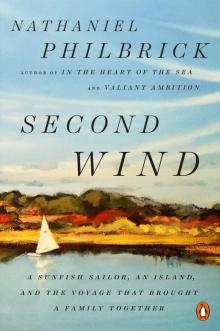 Second Wind: A Nantucket Sailor's Odyssey
Second Wind: A Nantucket Sailor's Odyssey The Last Stand: Custer, Sitting Bull, and the Battle of the Little Bighorn
The Last Stand: Custer, Sitting Bull, and the Battle of the Little Bighorn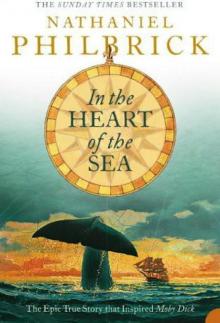 In the Heart of the Sea: The Epic True Story That Inspired Moby-Dick
In the Heart of the Sea: The Epic True Story That Inspired Moby-Dick Away Off Shore: Nantucket Island and Its People, 1602-1890
Away Off Shore: Nantucket Island and Its People, 1602-1890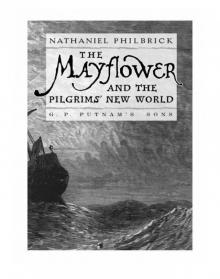 The Mayflower and the Pilgrims' New World
The Mayflower and the Pilgrims' New World The Last Stand: Custer, Sitting Bull and the Battle of the Little Big Horn
The Last Stand: Custer, Sitting Bull and the Battle of the Little Big Horn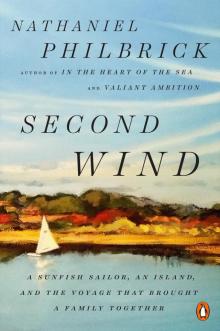 Second Wind
Second Wind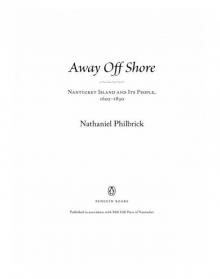 Away Off Shore
Away Off Shore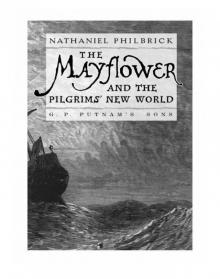 The Mayflower and the Pilgrims' New World*
The Mayflower and the Pilgrims' New World*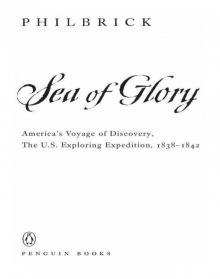 Sea of Glory
Sea of Glory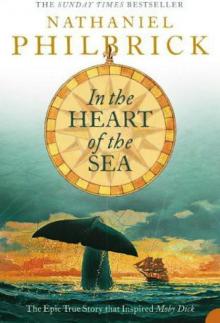 In the Heart of the Sea
In the Heart of the Sea The Last Stand
The Last Stand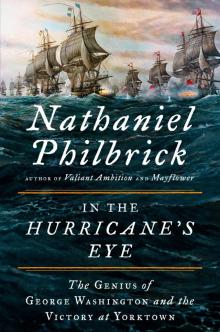 In the Hurricane's Eye
In the Hurricane's Eye